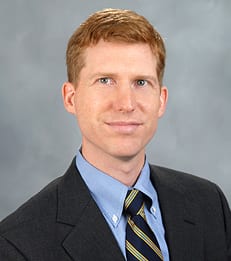
In today’s technology driven and rapidly changing world, it is imperative for companies and executives in all industries to be aware of the shifts happening around them. The question is, how do today’s leaders and the leaders of tomorrow prepare for the changing times?
We reached out to professors from top tier universities – William Duggan – Columbia Business School, Brian Eng – Northwestern Kellogg School of Management, Robert Seamans – New York University Stern, and Jonathan Feinstein – Yale School of Management – in order to answer the question and find out how they are preparing their students, tomorrow’s leaders, for a changing economic landscape.
1. Can you tell us about the course you teach?
WD – Columbia University: I teach a course for our MBA students that shows the latest research on how new ideas happen in the human brain – contrary to the dominant notion of brainstorming. Then we break the steps down into a method that you can learn to better yourself and your decision-making skills. We see many and varied examples of the method in action through history: wherever we can uncover how innovations happened, we see the same method in the origin of the idea.
BE – Kellogg School of Management: I teach “Introduction to Software Development”, which is essentially a “bootcamp”-style course that is designed to expose a student to the world of everything software. The idea of the course is to properly frame how learning to code can benefit them in future endeavors, and provide just enough for a jumping-off point for future learning. Many of my students come from a consulting or a corporate marketing, finance, operations, etc. environment and many have never tried building their own websites and apps. Most have been told, sometime along the way, that they should “learn to code”, but it’s never been explained what that means.
RS – NYU Stern School of Business: I teach game theory and corporate strategy to MBA students at NYU’s Stern School of Business. These classes are a mix of case studies, simulations and in-class discussions that help students study how firms make corporate level decisions, and help students learn how game theoretic techniques can help build an understanding of the business decisions that firms make.
JF – Yale University: I teach a class called “Creativity and Innovation” at Yale. It has been very popular and featured in Business Week online as well as FastCompany. It runs 7 weeks, 3 hours per week and is filled with exercises to help students experience creative activities, as well as concepts and many reflections.
a. Do you believe innovative thinking be taught/learned?
RS – NYU Stern School of Business: Yes, of course. Steve Jobs famously learned about design in a calligraphy class at Reed College. He credits this class with inspiring the look and feel of the Mac. More generally, you can learn from what others have done in the past–these are the benefits of case studies–and you can also learn from your peer students.
JF – Yale University: Most definitely. Innovation is about creativity and I tend to think that just about everyone can be creative. When someone tells me they are not a creative person, my response is – “Of course you are. We just have to remove some of the blocks you might be experiencing, for example feeling unconfident or not putting the time in.” We need to help establish conditions in which people can experience creativity to foster innovative thinking. For example, one of the exercises we do at Yale is a photography/sketch project. Students articulate a theme they would like to explore (like reflections in car windows was one, once for a student). Then over the course of the week, they explore the theme, experiment. They turn in the project, present the results to the class, and reflect upon the experience and what they would do differently. It’s also good to teach exemplars, like Albert Einstein or the Wright Brothers.
b. Does your course touch upon corporate innovation?
JF – Yale University: Yes, we do discuss issues of corporate innovation, and especially both how to apply the understanding of individual and group creativity inside an organization, and how to produce a “creative culture.” I think one of the biggest obstacles to innovation inside an organization is managers who do not really understand what the creative process is like. It’s a winding road that takes time and space and support.
2. Why is it important to have a course on innovation/corporate innovation?
WD – Columbia University: Because the future is always different from the past. To succeed in the future you need a new idea of some kind, big or small. Corporate innovation and its importance essentially began the moment corporations began.
RS – NYU Stern School of Business: Because managers need to be able to innovate and improve their products, services, and production processes so that they don’t lose customers to their competitors.
a. What has changed within the corporate landscape that requires a course about it?
WD – Columbia University: There should always have been a course on corporate innovation. What has changed is the pace of innovation, thanks to the digital revolution and the spread of business worldwide. Innovation is now more visible.
RS – NYU Stern School of Business: There has always been a need for innovative thinking, innovative entrepreneurs, managers, and business leaders.
3. What is the impact of emerging technologies on existing companies?
BE – Kellogg School of Management: It is important that students recognize the speed at which new tools are being built every day, because the tools of today’s early adopters are going to trickle-down to corporate initiatives in the not-so-distant future. Within the context of software, established companies should be paying close attention to the tools and tech being used at startups and smaller, more swift companies, or else they risk being left behind.
4. How are today’s companies staying innovative?
RS – NYU Stern School of Business: In the case of technology, existing companies are investing massive amounts of money in artificial intelligence (AI) and other new technologies. McKinsey Global Institute estimates that established tech companies invested $18-27B in AI in 2016 alone, not including M&As.
JF – Yale University: I think they need to foster a creative culture. That means openness, being willing to learn and experiment, and supporting creative endeavors of employees.
a. Are they collaborating with startups?
RS – NYU Stern School of Business: In some cases collaborating with startups, and in other cases purchasing them.
5. Can you talk to us about collaboration and the role it plays in innovation?
JF – Yale University: Collaboration is a huge part of creativity and innovation. That includes brainstorming ideas, giving constructive feedback, and working together on tasks. What’s key is trust, and honestly a certain “magic” that is hard to define, but one of those things where “you know it when you see it.” I think pairs can be so creative – think Lennon and McCartney. Why were they so creative as a pair? Well, they had good communication and they were similar enough to be able to speak the same language, while also different enough to bring new ideas to the table. And they had a great friendship, which always makes it easier to share ideas and critiques.
6. Corporate innovation in 10 words. Go!
WD – Columbia University: Get a new and useful idea and then do it.
BE – Kellogg School of Management: Identifying opportunities, making them happen by thinking outside your job description! Uh oh, that’s 11.
RS – NYU Stern School of Business Corporate innovation is important; a culture of innovation is essential.
JF – Yale University: Creativity, inspire, support, trust, openness, communication, follow-through, feedback, change, freedom.
Bios:
 William Duggan – Senior Lecturer in Business Management, Columbia Business School
William Duggan – Senior Lecturer in Business Management, Columbia Business School
William Duggan is the author of three recent books on innovation: Strategic Intuition: The Creative Spark in Human Achievement (2007); Creative Strategy: A Guide for Innovation (2012); and The Seventh Sense: How Flashes of Insight Change Your Life (2015). In 2007 the journal Strategy+Business named Strategic Intuition “Best Strategy Book of the Year.” He has BA, MA and PhD degrees from Columbia University, and twenty years of experience as a strategy advisor and consultant. Professor Duggan teaches innovation in three venues at Columbia Business School: MBA and Executive MBA courses, and Executive Education sessions. In 2014 he won the Dean’s Award for Teaching Excellence. He has given talks and workshops on innovation to thousands of executives from companies in countries around the world.
 Brian Eng – Adjunct Lecturer of Innovation & Entrepreneurship, Northwestern Kellogg School of Management (Twitter)
Brian Eng – Adjunct Lecturer of Innovation & Entrepreneurship, Northwestern Kellogg School of Management (Twitter)
Brian is co-founder and managing partner of Bluebuzzard, a Chicago-based software firm founded in 2004, which specializes in Web-based software-as-a-service (SaaS) for the hospitality industry. At Bluebuzzard, Brian leads product management, operations and full-stack development efforts. A technology entrepreneur, consultant, speaker, teacher and author with more than 20 years of experience, he has led new product development and software engineering initiatives for some of the world’s largest and most progressive companies in hospitality, retail and manufacturing. He is the co-author of Rails for .NET Developers, published by Pragmatic Press in 2008.
 Robert Seamans – Associate Professor of Management and Organizations, New York University Stern (Twitter | LinkedIn)
Robert Seamans – Associate Professor of Management and Organizations, New York University Stern (Twitter | LinkedIn)
Robert Seamans, Ph.D. is an Associate Professor at New York University’s Stern School of Business. He recently completed a one year appointment as a Senior Economist at the White House Council of Economic Advisors where he worked on a wide range of policies relating to technology, innovation and entrepreneurship. Professor Seamans’ research focuses on how technology affects strategic interactions between firms, affects incentives to innovate, and ultimately shapes market outcomes. His research has been published in leading academic journals and has received numerous academic awards. He has been cited in multiple outlets including The Atlantic, Forbes, Harvard Business Review, The New York Times, Wall Street Journal and others. Professor Seamans received his B.A. from Reed College, his M.B.A. from the Yale School of Management, his M.A. in Economics from Boston University and his Ph.D. from the University of California, Berkeley.
 Jonathan Feinstein – John G. Searle Professor of Economics and Management, Yale School of Management
Jonathan Feinstein – John G. Searle Professor of Economics and Management, Yale School of Management
Jonathan Feinstein is interested in creativity and innovation, specifically the paths of development of creative individuals, including entrepreneurs, inventors, artists and scientists. He is the author of The Nature of Creative Development (Stanford University Press, 2006). His class The Practice and Management of Creativity & Innovation was featured in the Business Week Online article, “Creativity Comes to B-Schools” in the spring of 2006 and in Fast Company in 2014; he has been extensively cited and quoted in the media for his approach to creativity. He is also interested in creativity in education and the management of creativity.